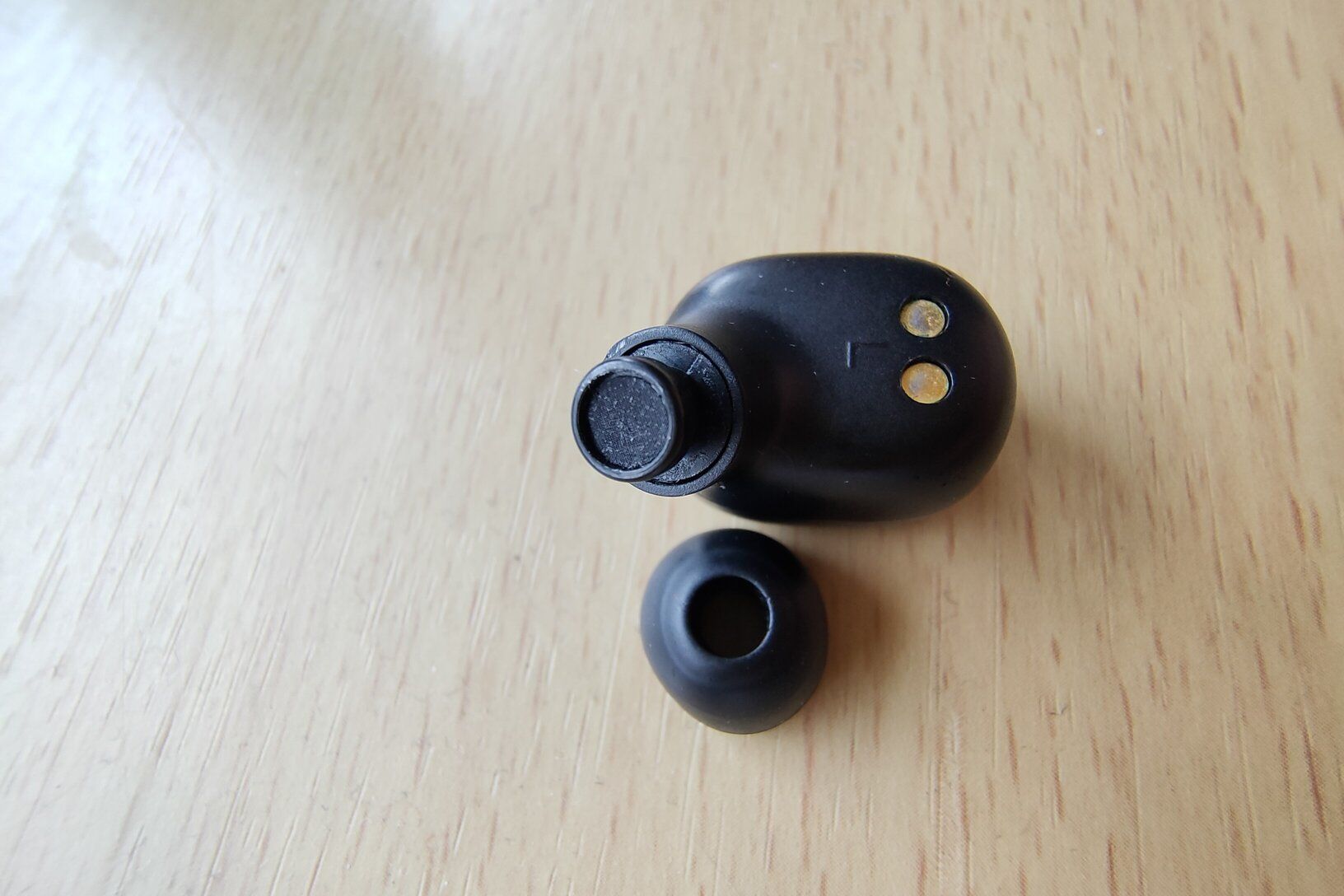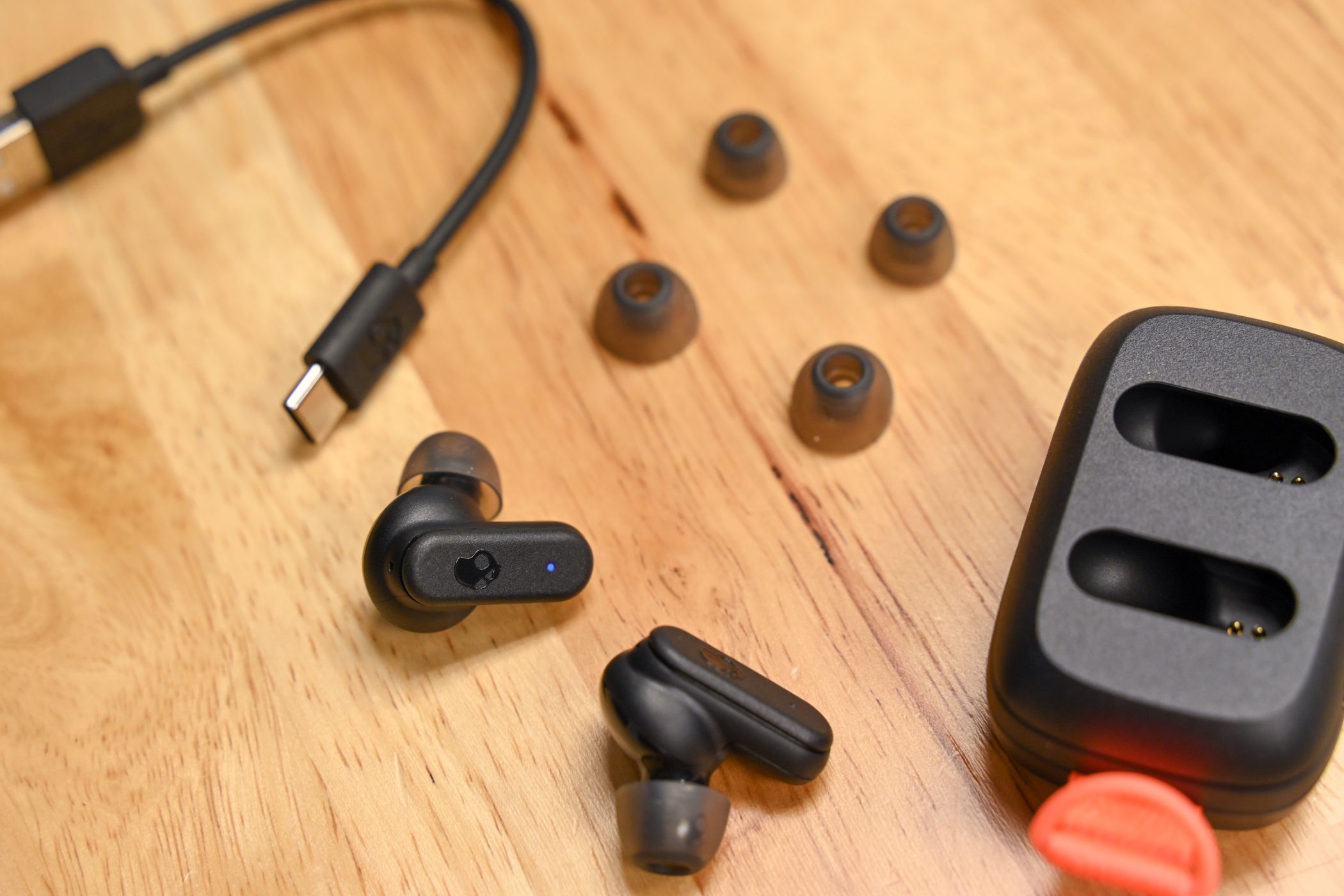Key Takeaways
- The most common reason for one earbud being too quiet is dirt accumulation. Deep-clean your earbuds using cleaning putty.
- Ensure a proper fit by using appropriately sized ear tips to create a tight seal between your earbuds and ear canal.
- Adjust the left/right sound balance setting on your device to match the volume of the loud earbud with the quieter one.
Few things in life are more annoying than when your earbuds suddenly stop working correctly. A common complaint I get from friends is that one of their earbuds became quieter a few months after purchase. Fortunately, there are some easy fixes you can try right now.
Deep Clean the Earbuds
Our ears constantly release small amounts of earwax to prevent dirt, bacteria, and small objects from entering and damaging the eardrum. It’s essentially a self-cleaning mechanism. Unfortunately, earwax is enemy number one of earbuds and the most common reason why your earbuds get quieter over time.
To clean your earbuds, remove the silicon tips by gently pulling on them. AirPods and some other types of earbuds don’t have these tips. Pretty much all earbuds have a plastic or metal mesh that protects the earbud from water and earwax.
While you might be tempted to soak a cotton swab in isopropyl alcohol and clean the grime, I strongly advise you against doing that. Alcohol, hydrogen peroxide, and other cleaning agents will dissolve the earwax, and it’ll trickle down deep inside the earbud, causing irreversible damage.
Instead, you want to grab some cleaning putty and gently push it into the nooks and crannies of the earbud. This will yank out the built-up dirt without pushing it deeper. Do this a few times until your earbuds are squeaky clean.
If your earbuds still aren’t at the same volume level, you can try removing the mesh from the earbud and cleaning the inside with the cleaning putty. The mesh is most likely glued into place, but you can easily remove it using a good pair of tweezers or a needle. What you want to do is go gently around the outer edge of the mesh and lift it up. Don’t stab the mesh directly, as you could pierce the driver and kill your earbuds.
When you’re done, gently place the mesh back on, the glue side facing toward the earbud. There should be enough adhesive to hold it firmly in place, but if you find that it’s sliding around too much, use a fineline applicator to apply a tiny drop of liquid glue on the mesh. You can check out the video below to see how it’s done on the Galaxy Buds (the same steps apply to most earbud models).
If the earbud is still quiet, there’s one more unconventional trick that could help dislodge dirt from the interior of the earbud—try gently sucking on the earbud. I know that it sounds incredibly gross, but this trick worked for me more times than I’d care to admit.
Removing the mesh could cause permanent damage to your earbuds. Be mindful to avoid accidentally stabbing the drivers or yourself. If you try sucking on the earbud, be wary that the earbud or its parts could end up in your airways or present a dangerous choking hazard.
Make Sure Your Earbuds Sit Tightly Inside Your Ear
Silicon ear tips will naturally stick to the skin in your ears, which creates a small vacuum that partially blocks out noise. But if the silicon ear tips don’t match your ear canal’s width, they can’t create a strong seal, and some of the sound will leak out.
You’ve probably received a few different ear tip sizes when you purchased the earbuds. You should play around with them to find the perfect fit. Also, a lot of people don’t know that ear canals actually aren’t symmetrical, and one of your ears might have a slightly wider ear canal than the other. If you’ve noticed that one earbud is always louder than the other, regardless of what earbuds you use, this could be the reason why.
I strongly recommend trying out universal memory foam ear tips. They can create a comfortable seal regardless of the shape of your ear canal. If your earbuds don’t use ear tips and you’ve determined that this is the problem, consider looking for alternative earbuds that provide a tight and comfortable fit.
Check the Left/Right Sound Balance
A surefire way to fix the volume balance between your left and right earbuds is to adjust the left/right sound balance. This setting allows you to adjust the volume of each earbud individually. Your quieter earbud should be at 100%, and then you can adjust the louder earbud until it’s at the same volume.
Android, iOS, Windows, and Mac all have built-in solutions to adjust the balance. Additionally, your music app probably has a left/right sound balance setting if you want an app-specific fix. Play a few different soundtracks and turn the louder earbud down until it’s at the same volume level as the quiet one.
If you open the left/right sound balance and notice that both sides aren’t at 100% or the middle of the balance slider, try adjusting them to the same volume level to check if that resolves the issue.
Disable Absolute Volume on Android
If your earbuds are way too quiet now, one potential fix is to disable absolute volume. Absolute volume is a feature for Bluetooth audio devices on Android that unifies the volume controls on your earbuds and smartphone. If you press volume down on your phone, it’ll lower the volume on your earbuds as well. This feature only works on earbuds that have separate volume controls.
The problem is that absolute volume doesn’t always play nicely with the on-board volume adjustments on your earbuds, resulting in quiet earbuds. To fix this, head over to developer options and ensure “Enable Absolute Volume” is off. If your settings say “Disable Absolute Volume,” turn the option on instead.
Restart Your Phone and Earbuds
Like with computers, restarting your phone and wireless earbuds can fix various random issues. First, restart your iPhone or Android device and see if that fixes the issue. If it didn’t, try restarting your earbuds by turning them off and back on.
If that didn’t work either, it’s time to do a factory reset on the earbuds. If your earbuds have an app, you could try doing the factory reset from there. But if not, most wireless earbuds use the same method for a factory reset. Take both earbuds out of the case and press and hold the power button on both earbuds for 15–30 seconds. They might make a sound or flash their LED to let you know that the reset worked. Pair your earbuds to your phone and check if this fixed the issue.
Update the Firmware
If you bought a new pair of wireless earbuds, there’s a good chance that you have an update waiting for you in the company app. You can think of firmware as the core software for your earbuds. It’s built into them, and it controls how they operate. A firmware update can improve the functionality of your earbuds, add new features, and fix stability and connectivity issues.
Check the earbuds user manual to see if there’s any mention of a company app. Alternatively, you can type in the earbuds brand in the App Store or Google Play Store to check for an official app. If one is available, install it and follow the on-screen instructions to connect your earbuds to the app. After that, check for a system/firmware update and install it. Keeping the firmware up-to-date is something you should do regardless of whether you’re experiencing issues with your earbuds’ volume.
Some earbud models, such as the AirPods, will silently update while on charge and if near your smartphone.
Maybe It’s Time for a New Pair of Earbuds
If you tried everything and one is still louder, there isn’t much left to try. If you’re on wired earbuds, and you’ve noticed that the volume changes as you yank on the cable, it’s best to replace them. Changing the left/right sound balance can fix the volume, sure, but it doesn’t necessarily mean that the earbuds will sound the same. I’ve had to throw away a pair of earbuds because one side had more bass than the other after dropping it.
Wireless earbuds have a ton of microscopic parts, and if only one of those parts doesn’t work as intended, it could have a catastrophic result on sound quality. This means that our earbuds can only handle so many hours of earwax and gym sweat before they break. If it’s time for a new pair, check out our list of the best wireless earbuds to see if there’s something you like.
source

